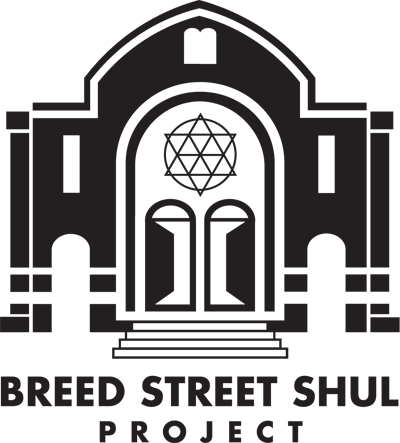From 1910 to 1950, some 75,000 Yiddish-speaking Eastern European Jewish immigrants made Boyle Heights into the largest Jewish community west of Chicago. But Boyle Heights was much more than that. Many different ethnic communities – most prominently Latinos, Japanese-Americans, and White Russians – created a vibrant, diverse Los Angeles neighborhood that fostered cultural creativity and a remarkable degree of intergroup tolerance and understanding. Community leaders such as entrepreneurs Joe Gold and Max Factor, Jurist Harry Pregerson, and athlete Mike Garrett all called Boyle Heights home. (Mickey Cohen and Ben Siegel also ran a numbers racket from Boyle Heights, but we’re a little sheepish about that.). In the 1940’s, Jews and Latinos campaigned together to elect Edward R. Roybal as the first Latino Los Angeles City Councilmember.
Great Jewish communities have great places of worship: in Boyle Heights, that great place was Congregation Talmud Torah, affectionately known as the Breed Street Shul. Residents called it “The Queen of the Shuls” due to the soaring, visually stunning Byzantine Revival design of its front 1922 building. (Later, the National Park Service listed the Shul in the National Register of Historic Places.). Renowned rabbis and cantors came from across the country to celebrate the High Holy Days and other sacred occasions. The Shul served as the heart of the neighborhood as well as a spiritual community. “Whenever there was a big story or event, people went over to the Shul to find out what happened,” one woman recalled.
“We didn’t always agree, but that was Boyle Heights!”
After World War II, as five freeways bisected the neighborhood, the Jewish community moved to other parts of Los Angeles. Boyle Heights evolved into a new center for working-class Latinos and the Shul became the last remaining of some 30 synagogues that once dotted the area.
Beginning in the 1980s, the Shul suffered neglect, vandalism, earthquake damage and abandonment, rendering it unusable and in real danger of demolition. Intensive efforts, borne entirely by volunteers, galvanized leaders in Washington, Sacramento, City Hall and the Jewish and Latino communities to save the Shul from the wrecking ball. Since then, the Shul has gone from being in danger of imminent collapse to its more hopeful but still fragile present. Emergency stabilization work has been completed, utilizing $1.3 million of public and private funds and more than $500,000 in contributed in-kind services. As part of that effort, over 60% of the required seismic work on the main building has been completed.
The Shul does not require the reconstruction of the main building to spring back to life. The smaller Historic 1915 Building opened in November 2011. The first minyan and Bar Mitzvah in nearly a quarter of a century occurred weeks later. Now, organizations operating out of the space provide vital programming and services for the community. Space is available for meetings, events and a host of other activities. The Shul is not merely an architectural gem: it is an asset for energetic, contemporary Boyle Heights and the rest of Los Angeles.


